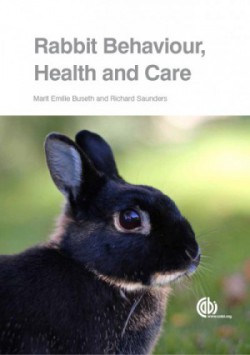Sore hocks or bacterial pododermatitis is a skin condition that mainly arises from the rabbit`s living conditions, but also as a result of fractures or other injuries in the rabbit, which can cause undesirable pressure. Obesity, long nails, confinement, living on wire floors or other rough substrates, and urinary incontinence are some of the reasons that often lead to suffering. Hairless areas under the feet with subsequent red skin are the first signs of a rabbit developing sore hocks. Early treatment and improvement of living conditions is important. Untreated, pododermatitis will lead to pain, infection in the hairless areas, and may eventually spread to the underlying bone and as well cause blood poisioning.
In the wild, the rabbit`s claws will sink into the grass or other soft ground. This helps the foot to keep contact with the surface and consequently avoids unfortunate pressure. This is the cause both when they are moving and sitting still, and to prevent suffering due to sore hocks it is important to be aware of the rabbit`s anatomy and needs.

In captivity, rabbits are often provided soiled and dirty bedding, poor nutrition and reduced access to excercise and natural movement, which all make them vulnerable for developing pododermatitis. When the claws are unable to sink into the ground, the front paw is being raised. This leads to an unnatural burden on the rabbit`s back legs, and the increased pressure on the hocks may result in damaging sores.
How to prevent and relieve sore hocks
A rabbit with sore hocks should be examined and treated by a veterinarian. In addition, one should adapt the living conditions as good as possible. Remember that prevention is the best treatment, so everyone living with a rabbit should evaluate the living environment.
The ideal substrate is dry grass, as explained above. There are still, however, a great deal of things that can be done to provide one`s houserabbit with a satisfying flooring. Soft, thick and non-slip blankets are important for a free range houserabbit. A rabbit living in a cage will need soft, thick and dry bedding, in addition to more space to move about. Regardless of housing condition, they should have a litter tray with soft and absorbent litters, for example litter made from recycled paper. A layer of hay may cover the litter, but make sure it is clean and dry.
Obesity and pain from arthritis may also cause sore hocks. A high-fibre diet and regular excersise is essential.
Wire flooring must be avioded!
Check the hocks periodically, and remember: Prevention is the best treatment!
An illustrative story
Ekorn had been kept under unfortunate conditions. The rabbit had the most beautiful silky coat, but when he was
brought to my house I immediately noticed that he was unable to put down his rear feet, and when I turned him around I discovered horrible sore hocks.
I installed him in my office, where I covered the floor with thick and soft fleece blankets. I had hay covered with towels in his litter tray to minimize pressure on his sore feet. We went to the clinic, and I put on a soothing cream and ensured that he was eating. Further treatment was to provide antibiotics and pain relief.

We grew close to each other in the ensuing weeks, as I spent a lot of time caring for him, and finally his feet recovered.
He was a wonderful and cheerful rabbit, and a perfect example of a personality one can never forget. I am sure that everyone involved in rescuing rabbits has some individuals with a special place in their heart, a rabbit that they can never forget.
Marit Emilie Buseth

Captivity often prevents animals from performing their natural behaviour. In the case of rabbits, restrictions on the ability to move about, have serious consequences, and one should have knowledge on the species`needs and preferences when considering types of living arrangements. Get a thorough understanding of the rabbits`natural habitat, health, behaviour, social behaviour and all topics vital to offer them suitable living conditions in a domestic setting in Rabbit Behaviour, Health and Care.










